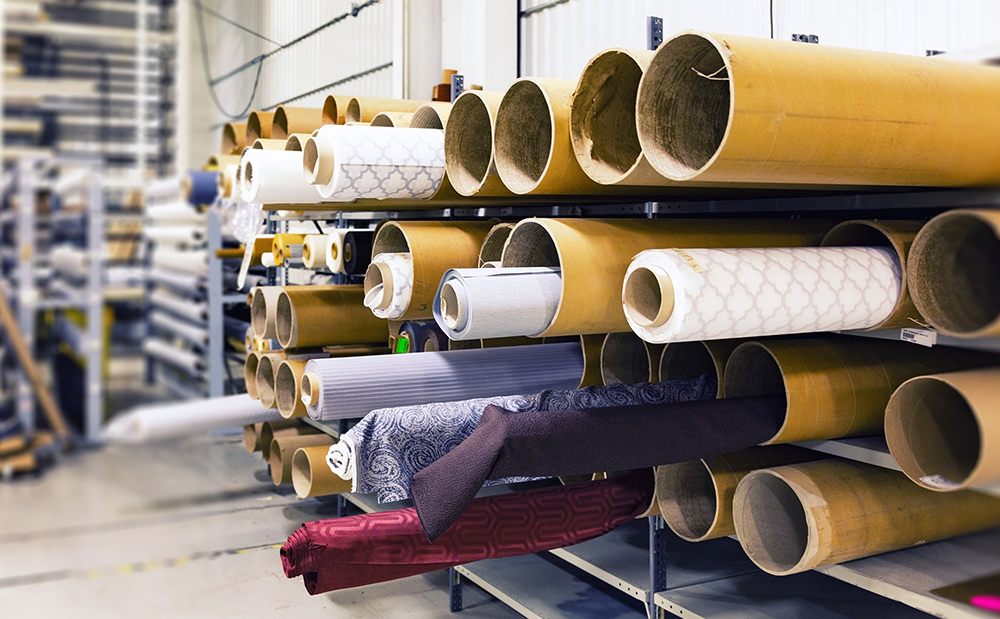Toxic chemicals throughout the whole production process of textiles
As a consumer everybody should be aware of the chemicals used all along the production line of conventional clothing. Even in the growing phase of non organic cotton harmful chemicals from spraying herbicides and pesticides get into the fiber.
Not only nature, everybody is affected by those toxic chemicals, the growers, the factory workers and the person wearing the final product. As the skin is the largest organ of your body it absorbs the poisonous substances. Sweating and body heat even accelerate the absorption into your skin. Synthetic fibers like nylon, polyester, spandex and acrylic, don’t breathe like natural fibers and make you sweat even more. Also most chemicals are used in petroleum based synthetic fibers and special finishes.
Health effects
Around 8.000 synthetic chemicals are used during the production process. You probably ask yourself what this means for your personal health. These toxic chemicals can lead to skin irritation, allergies, headaches and a sore throat. Studies find that they are also linked to thyroid disease, immune disorder and various kinds of cancer.
What are the most alarming chemicals in your clothes?
There are 7 dangerous toxic chemicals hiding in your waterproof, wrinkle free and anti-bacterial textiles.
Especially in outdoor clothing, which is marked as waterproof and/or stain resistant PFC’s (Polyfluorinated and perfluorinated chemicals) and PFA’s (Perfluoroalkyl and polyfluoroalkyl substances) are often used as a finish. These chemicals can for example lead to hormone disruption and possible liver damage.
Another key phrase to ring your alarm bells is wrinkle free. Brand new clothes and wrinkle free fabrics have finishes where the toxic chemical formaldehyde is used. While inhaling the chemical has been linked to asthma, nausea, and even cancer, wearing clothes with formaldehyde is more commonly associated with dermatitis.
If a textile is anti-bacterial, chemical blends and fungicidals are used such as triclosan, nanoparticle silver and phthalates. These are often used in the fitness industry for work out gear and shoes and can lead to cancer, DNA damage, hormone disruption and others.
Another harmful treatment of your favourite pair of jeans might be the AZO Dyes. They are the most commonly used dyes in the fashion industry and are linked to cancer because they release chemicals known as aromatic amines. The chemical cocktail also includes PPD (p-Phenylenediamine) and Formaldehyde. Denim and dark colors often even contain higher concentrations of those chemicals.
Conventional cotton is also seen as a problematic fiber because a large amount of insecticides are used in the growing phase. It is estimated that the growing of conventional cotton accounts for 25% of insecticides that are used around the world.
Last but not least we have to talk about the chromium in leather. Ninety percent of leather tanning is done with chromium that can lead to skin irritation and respiratory problems. The chemical is used to turn animal skin into leather. It also causes severe water pollution and has a big negative effect on the environment.
How can you avoid harmful chemicals?
You can reduce our exposure to unhealthy and hazardous substances by becoming more aware of what you put on our body.
- Always wash new clothes to remove toxins, before wearing them
- Look out for alternatives to real leather
- Look out for organic fibers and organic products
- Buy second hand and vintage
- Avoid buying clothes made from synthetic, petroleum based fibers
- Buy products made from natural fibers like hemp, linen, wool, bamboo, silk and organic cotton
Remember that with your purchase decision you can save your health, the health of the production workers and the health of our planet.
How do we as FreyZein make sure that our clothes aren’t harmful?
We as a company make sure that our whole supply chain is within Europe. The production of the garment underlies the European Law which is much more strict considering chemicals and harmful production processes than any law abroad. The European REACH regulation deals with the evaluation, authorization and restriction of chemical substances. AZO Dyes for example are strictly forbidden in Europe. As we still are a small company we can’t yet afford all those expensive certificates, but with having our whole sourcing and production within Europe we make sure that the people that make and wear our clothes are protected.
This article was written in cooperation with Dr. Barnaby Caven.
List of sources:
https://www.bmk.gv.at/themen/klima_umwelt/chemiepolitik/recht/eu_vo/reach.html
https://ecoworldonline.com/beware-of-toxic-chemicals-in-clothes/



